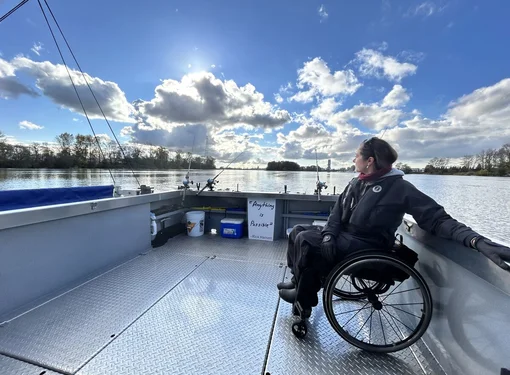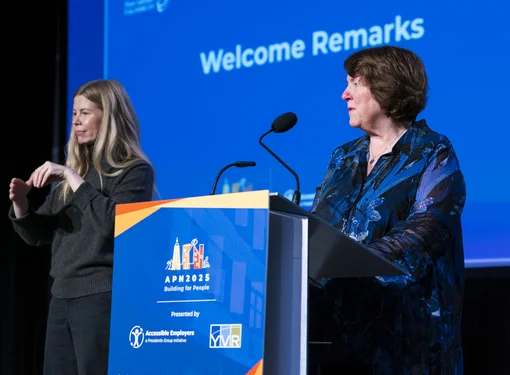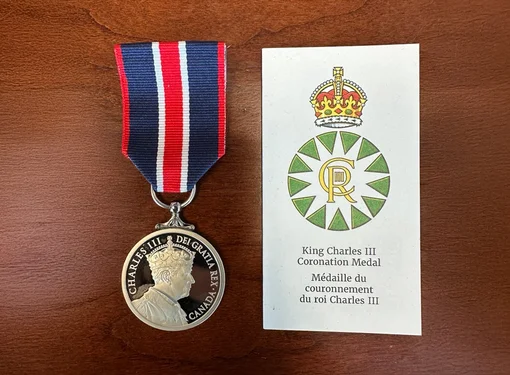How do we describe accessibility?
One of the most universally recognizable images in the world is the accessibility symbol, which depicts a person in a wheelchair, usually against a blue background.
When people see it, they instantly know that it designates some sort of access for people with disabilities – and many also know that it also symbolizes non-wheelchair related disabilities.
But how useful is the symbol at telling us how accessible something is?
Balancing everyone's needs
One of the trickiest things about accessibility is that everyone's needs are different. What is accessible to one person may not be accessible to others.
For example, smooth flooring helps wheelchair users but can be an obstacle for those who are blind and rely on tactile markings to get around – the very same things that give wheelchair users wildly bumpy rides.
You are technically allowed to call the situation "accessible" – but to whom?  Above image: An accessible door button, which helps people with mobility impairments.
Above image: An accessible door button, which helps people with mobility impairments.
"Accessible"?
By calling something simply "accessible," you fall into a trap of neglecting one group over another, making the word somewhat meaningless.
In the United States, this problem is taken further by the term "ADA [Americans With Disabilities Act] compliant." This simply means that the minimum requirements of the ADA have been followed.
However, many visiting non-Americans do not know what this term even means, and ADA requirements still have problems with helping one group while creating an obstacle for another. Another problem is that the ADA has had very few updates over the years to match changing technologies.
There is no catch-all term that can describe true accessibility for everyone – "accessible" and "ADA compliant" are inadequate.  Above image: A restroom with an accessibility symbol.
Above image: A restroom with an accessibility symbol.
The accessibility symbol
For many decades, a wheelchair icon has been the universal way to say "this is accessible." But with so many different definitions of "accessible," the symbol's usefulness can also be called into question.
One example that we found had a restroom with the accessibility symbol on the door, but no toilet stall inside large enough for a wheelchair. However, it also would have been fairly "accessible" for people who are blind.
Some may also focus too much on one aspect of accessibility. Public transit systems often paste the accessibility symbol everywhere. In reality, they have a reputation of promoting wheelchair access, at the expense of those who are blind or deaf. Only in the past decade has GPS technology made it feasible for buses to have stops displayed and announced aloud.
Parking lots contain perhaps the most famous usage of the accessibility symbol. Accessible parking spots make an attempt at suiting everyone's needs, such as having more room for mobility devices and being close to entrances for those with limited physical stamina.
But when people with disabilities who do not use mobility devices park in those wide spots, the problems with the symbol's "catch-all" approach become apparent as frustration rises from wheelchair or walker users.
Some cities have tried to fix this. In Portland, Oregon, accessible parking placards are classed by disability. For example, some spots are only to be used by people with a "wheelchair user" parking placard.
These situations expose how one symbol cannot represent everyone's different needs.  Above image: An accessible playground with modern features, such as ramps and rubber flooring.
Above image: An accessible playground with modern features, such as ramps and rubber flooring.
Accessibility changes over time
As improvements are made in both innovations and attitudes, the meaning of "accessible" also morphs into something different.
In a previous blog post, we talked about accessible playgrounds. One photograph that we used had a playground in Mississippi that was considered "ADA compliant" but had wooden chips as its flooring, impeding wheelchairs, walkers, and strollers.
The idea at the time was to have play elements being low enough for children who cannot climb playground equipment.
For those days, it was likely considered very accessible. As time passed by, new technologies emerged, such as rubber flooring that is both accessible and safe for children when they fall, and roll-on swing sets. Suddenly the meaning of "accessible" shifted.
Similarly, the standards for other things such as public transit and buildings have changed. An elevator that is "good enough" for a mobility device to fit is, well, no longer good enough. Public transit has gone from using cumbersome lifts to having low-floor vehicles with ramps.
It is not surprising if "accessible" means something else ten years from today.  Above image: The traditional accessibility symbol for a restroom.
Above image: The traditional accessibility symbol for a restroom.
Is it time for a new symbol? Or a few new symbols?
With all this in mind, there have been a few different activist movements.
The most popular movement involves changing the wheelchair symbol itself to make it less stationary and more active, reflecting the shift of people with disabilities to becoming more active in their communities.
Another movement that has gained some attention, especially from the tourism industry, is introducing accessibility symbols for those with mobility, sight, and hearing issues.
It is thought that by using three separate symbols, we can be more specific about what "accessible" means. The standard accessibility symbol simply does not communicate enough information about accessibility.
Only time will tell if we can find a more useful way to describe accessibility that people can adopt worldwide. What would you do to re-define accessibility?







